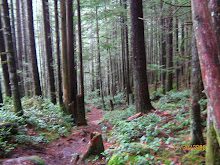Chichen Itza
Chichen Itza was a major regional focal point in the northern Maya lowlands from the Late Classic through the Terminal Classic and into the early portion of the Early Postclassic period. The site exhibits a multitude of architectural styles, from what is called “Mexicanized” and reminiscent of styles seen in central Mexico to the Puuc style found among the Puuc Maya of the northern lowlands. The presence of central Mexican styles was once thought to have been representative of direct migration or even conquest from central Mexico, but most contemporary interpretations view the presence of these non-Maya styles more as the result of cultural diffusion.
Decline
According to Maya chronicles (e.g., the Book of Chilam Balam of Chumayel), Hunac Ceel, ruler of Mayapan, conquered Chichen Itza in the 13th century. Hunac Ceel supposedly prophecized his own rise to power. According to custom at the time, individuals thrown into the Cenote Sagrado were believed to have the power of prophecy if they survived. During one such ceremony, the chronicles state, there were no survivors, so Hunac Ceel leaped into the Cenote Sagrado, and when removed, prophecized his own ascension.
While there is some archaeological evidence that indicates Chichén Itzá was at one time looted and sacked,[11] there appears to be greater evidence that it could not have been by Mayapan, at least not when Chichén Itzá was an active urban center. Archaeological data now indicates that Chichen Itza fell by around AD 1000, some two centuries before the rise of Mayapan.[12] Ongoing research at the site of Mayapan may help resolve this chronological conundrum.
While Chichén Itzá “collapsed” (meaning elite activities ceased and the site rapidly depopulated) it does not appear to have been completely abandoned. According to post-Conquest sources, both Spanish and Maya, the Cenote Sagrado remained a place of pilgrimage.
Decline
According to Maya chronicles (e.g., the Book of Chilam Balam of Chumayel), Hunac Ceel, ruler of Mayapan, conquered Chichen Itza in the 13th century. Hunac Ceel supposedly prophecized his own rise to power. According to custom at the time, individuals thrown into the Cenote Sagrado were believed to have the power of prophecy if they survived. During one such ceremony, the chronicles state, there were no survivors, so Hunac Ceel leaped into the Cenote Sagrado, and when removed, prophecized his own ascension.
While there is some archaeological evidence that indicates Chichén Itzá was at one time looted and sacked,[11] there appears to be greater evidence that it could not have been by Mayapan, at least not when Chichén Itzá was an active urban center. Archaeological data now indicates that Chichen Itza fell by around AD 1000, some two centuries before the rise of Mayapan.[12] Ongoing research at the site of Mayapan may help resolve this chronological conundrum.
While Chichén Itzá “collapsed” (meaning elite activities ceased and the site rapidly depopulated) it does not appear to have been completely abandoned. According to post-Conquest sources, both Spanish and Maya, the Cenote Sagrado remained a place of pilgrimage.





Tulum
The Maya site may have been formerly also known by the name Zama, meaning city of Dawn.Tulúm is also the Yucatec Mayan word for fence or wall (or trench), and the walls surrounding the site allowed the Tulum fort to serve as a defense against invasion. From the numerous depictions in murals and other works around the site, Tulum appears to have been an important site for the worship of the Diving or Descending God.
The Maya site may have been formerly also known by the name Zama, meaning city of Dawn.Tulúm is also the Yucatec Mayan word for fence or wall (or trench), and the walls surrounding the site allowed the Tulum fort to serve as a defense against invasion. From the numerous depictions in murals and other works around the site, Tulum appears to have been an important site for the worship of the Diving or Descending God.

Coba'
Coba is located around two lagoons. A series of elevated stone and plaster roads radiate from the central site to various smaller sites near and far. These are known by the Maya term sacbe(plural sacbeob). Some of these causeways go east to the Caribbean coast, and the longest runs over 100 kilometres (62 mi) westwards to the site of Yaxuna. The site contains several large temple pyramids, the tallest, in what is known as the Nohoch Mul group of structures, being some 42 metres (140 ft) in height.
Coba is estimated to have had some 50,000 inhabitants (and possibly significantly more) at its peak of civilization, and the built up area extends over some 80 km². The site was occupied by a sizable agricultural population by the 1st century. The bulk of Coba's major construction seems to have been made in the middle and late Classic period, about 500 to 900, with most of the dated hieroglypic inscriptions from the 7th century. However Coba remained an important site in the Post-Classic era and new temples were built and old ones kept in repair until at least the 14th century, possibly as late as the arrival of the Spanish.










This reminds me of the ruin in Oaxaca, Monte Alban. There are some pictures on this page:
ReplyDeletehttp://www.io.com/~jrob/Oax/01/.index1.html
(taken in spring of '05)
We were staying very close to Oaxaca, but ran out of time to make it to those ruins.
ReplyDeleteI hope to go back and visit Campeche, also.